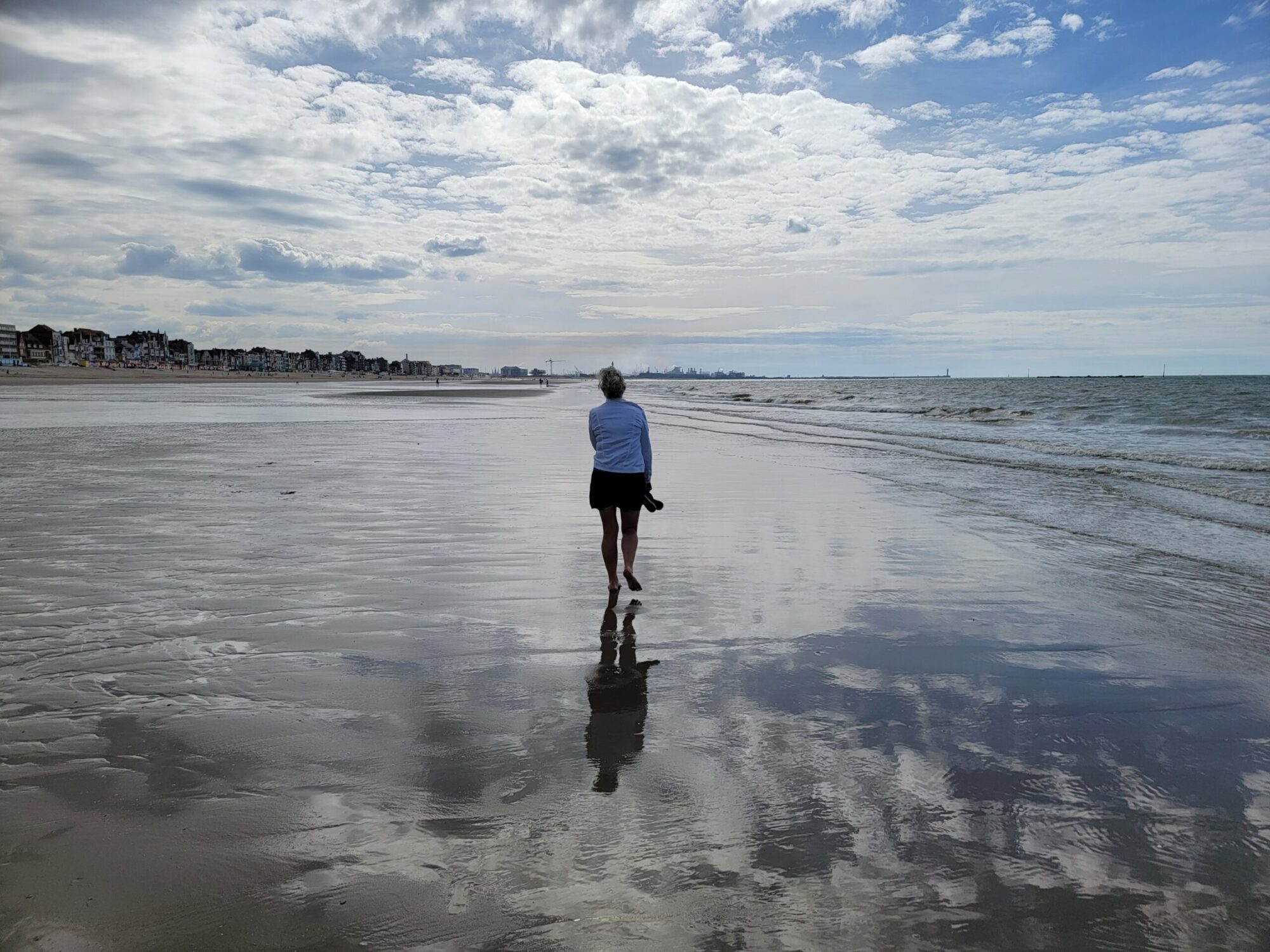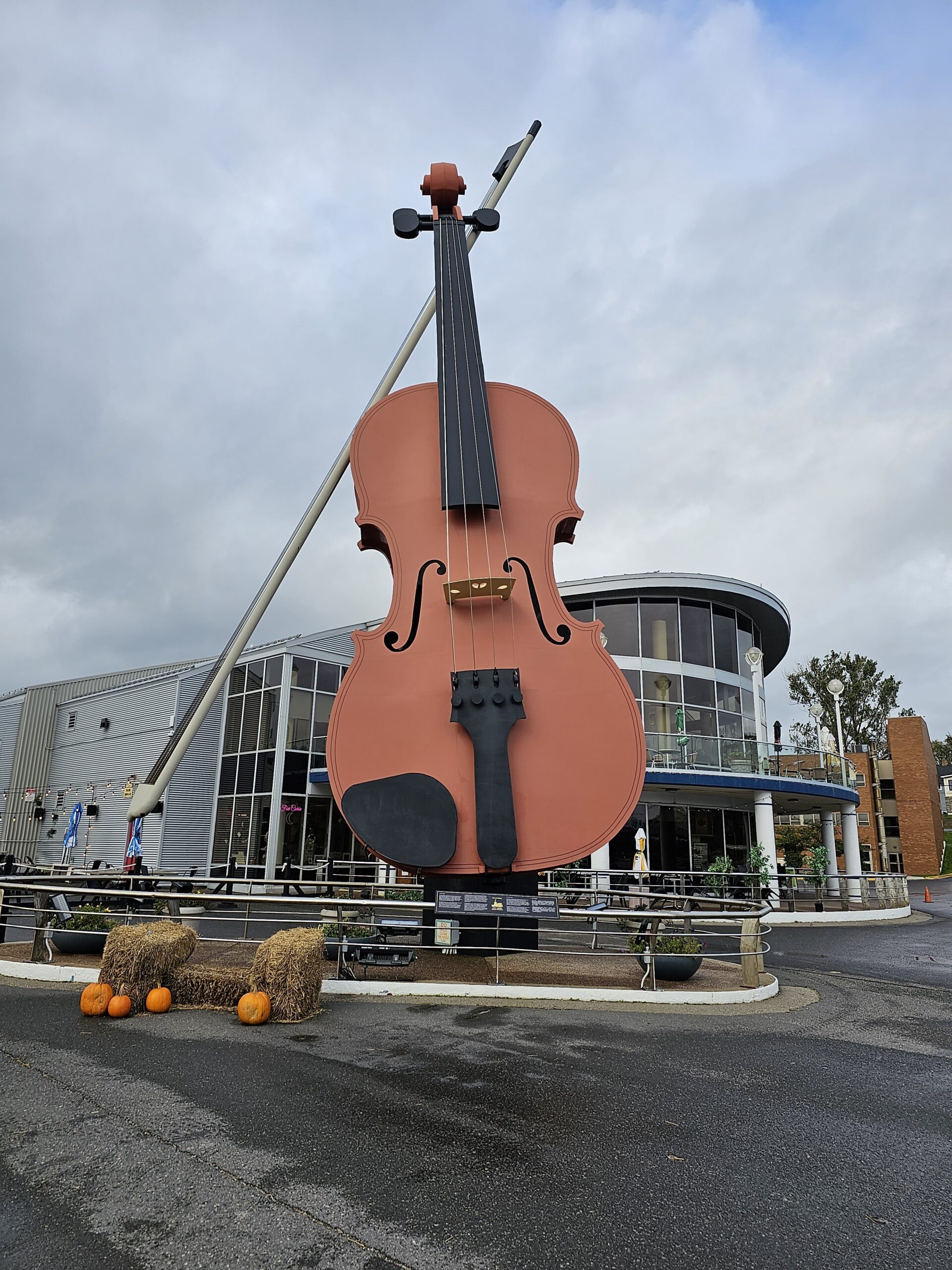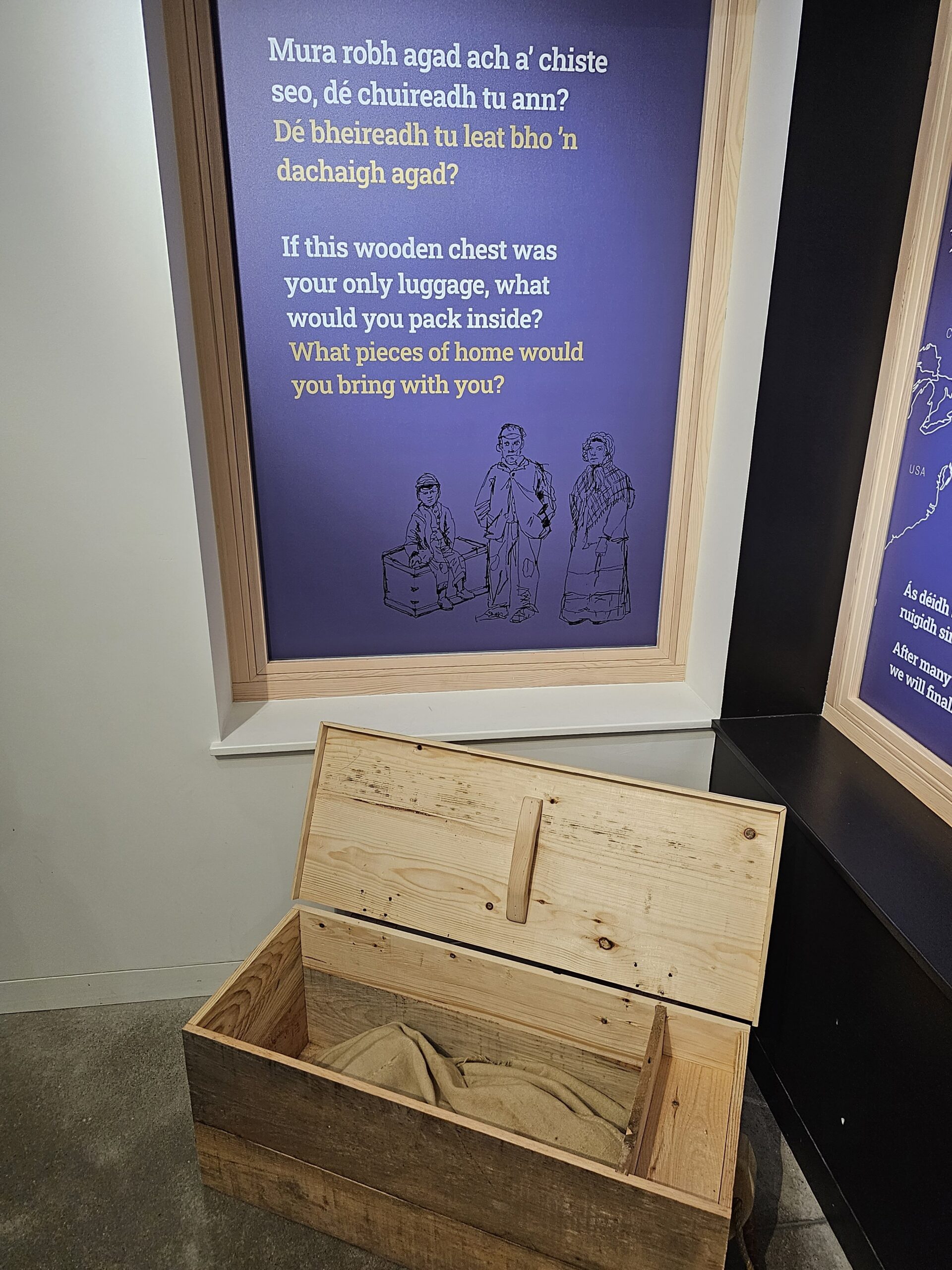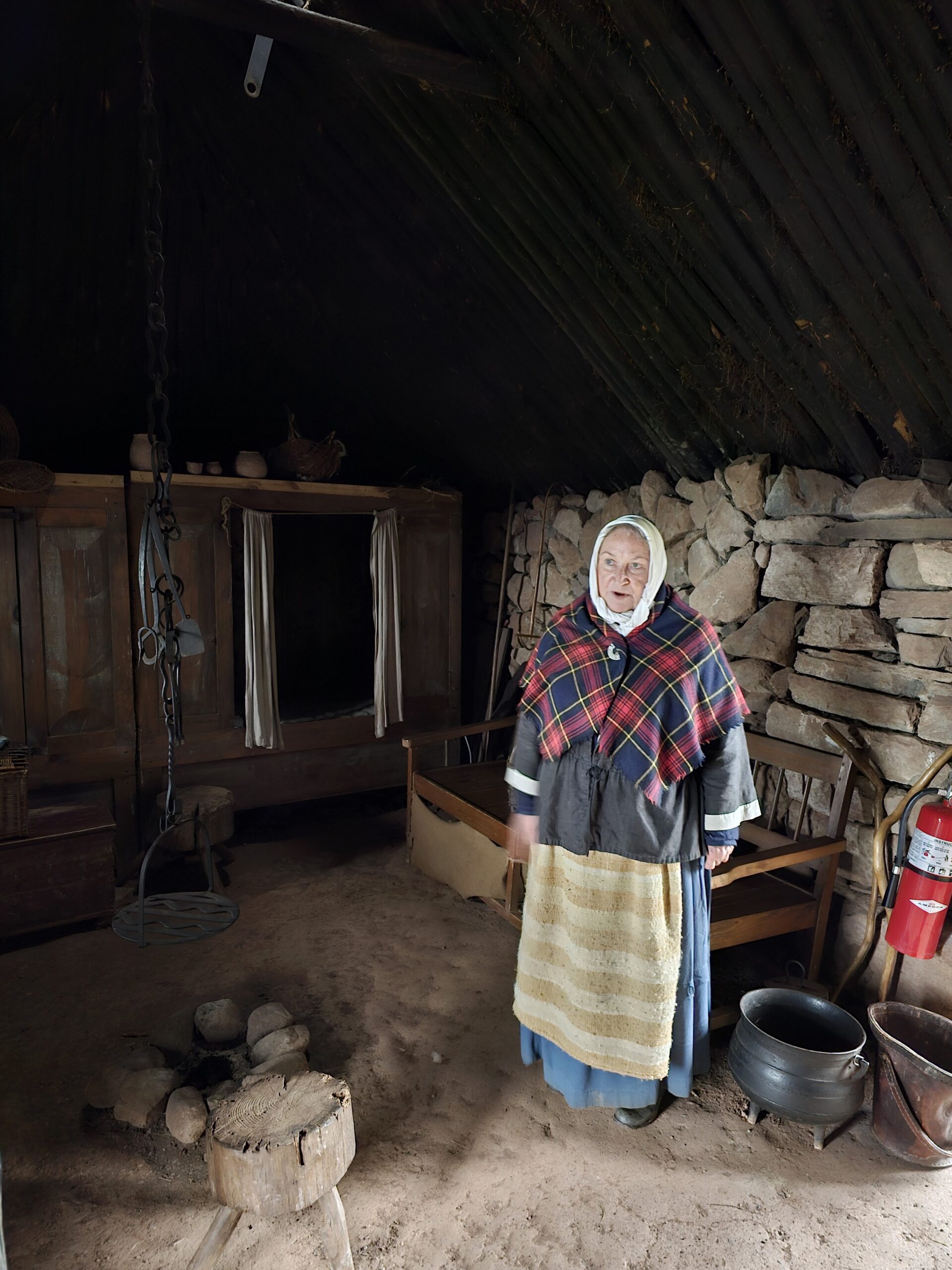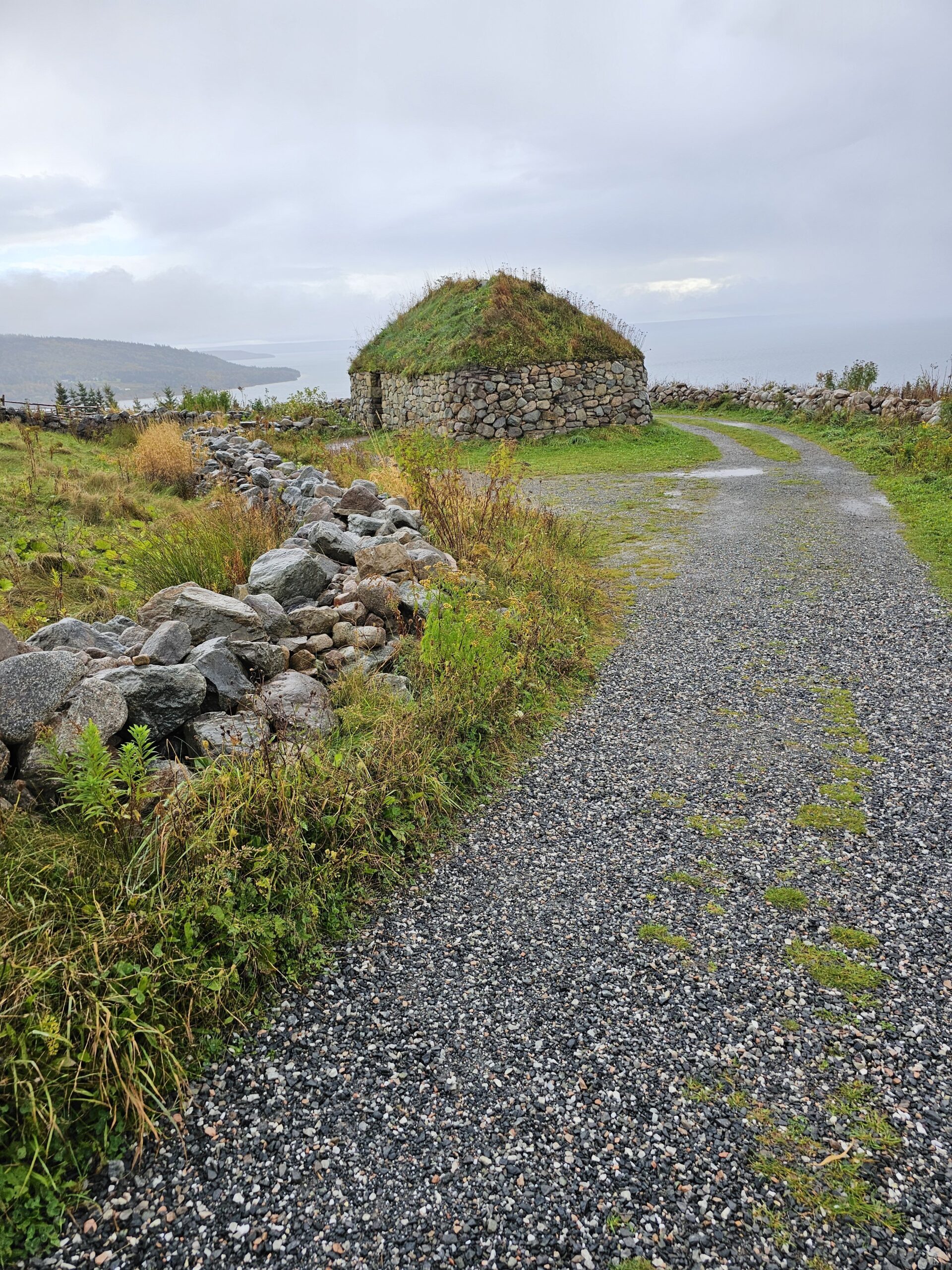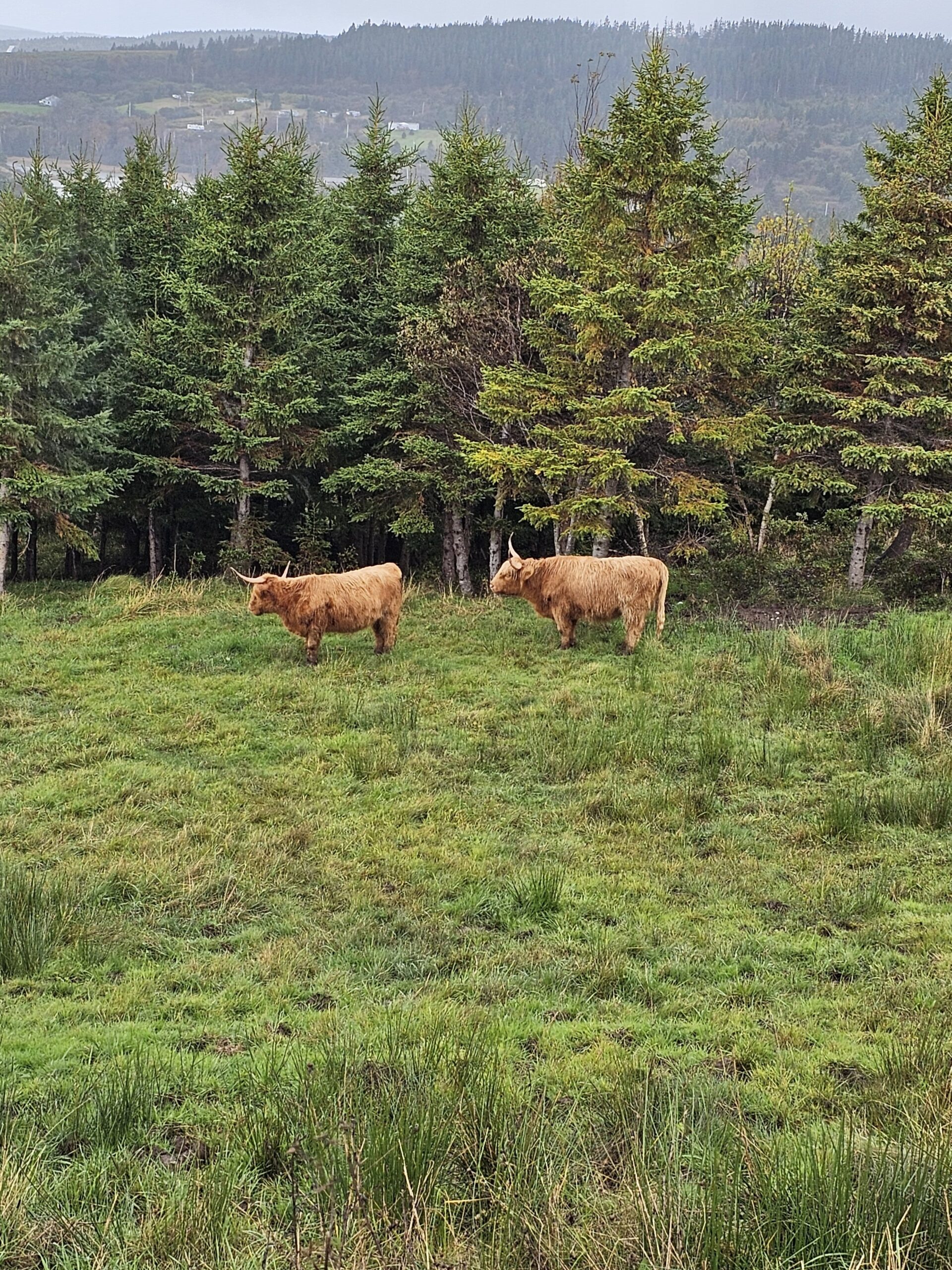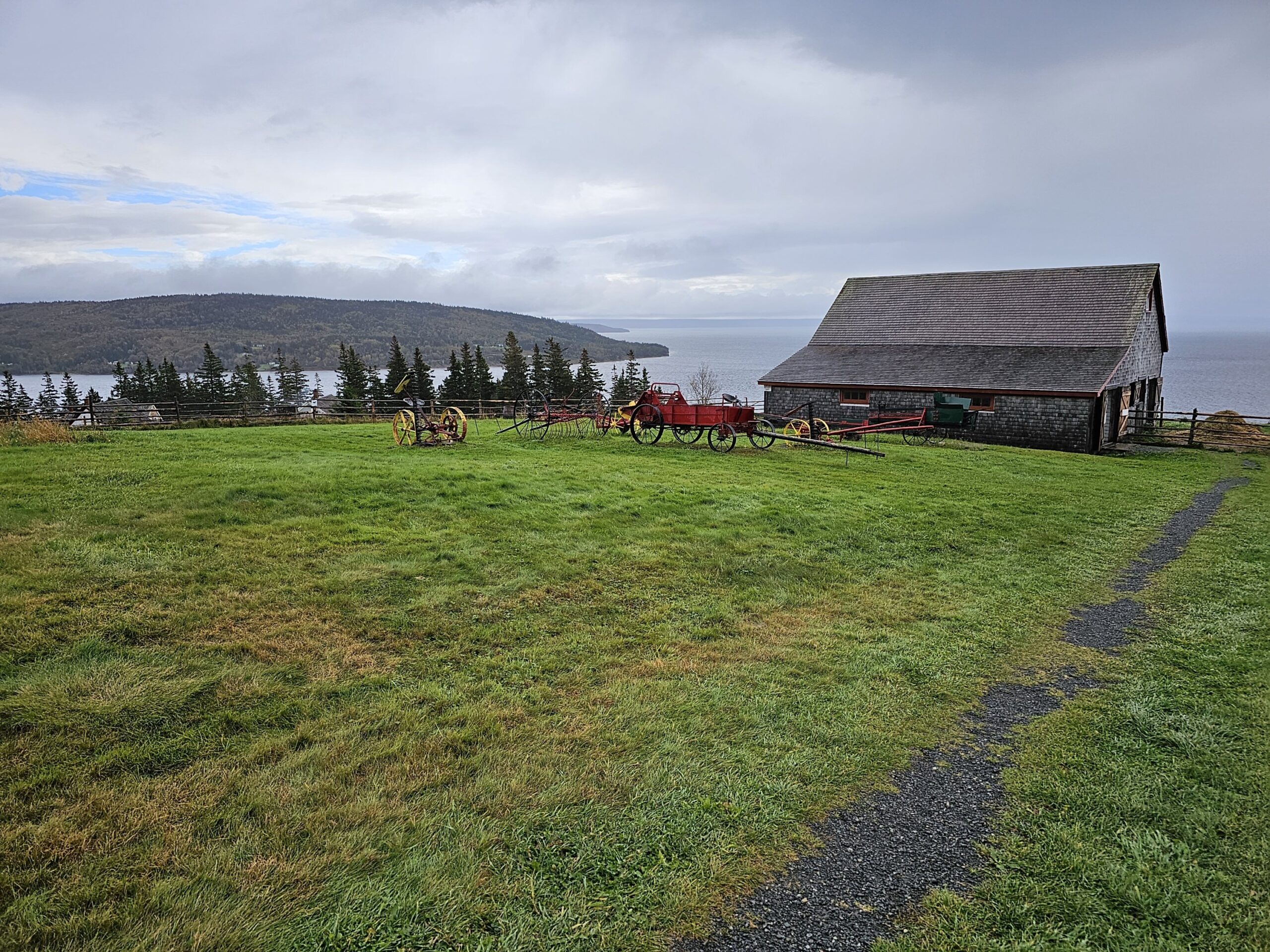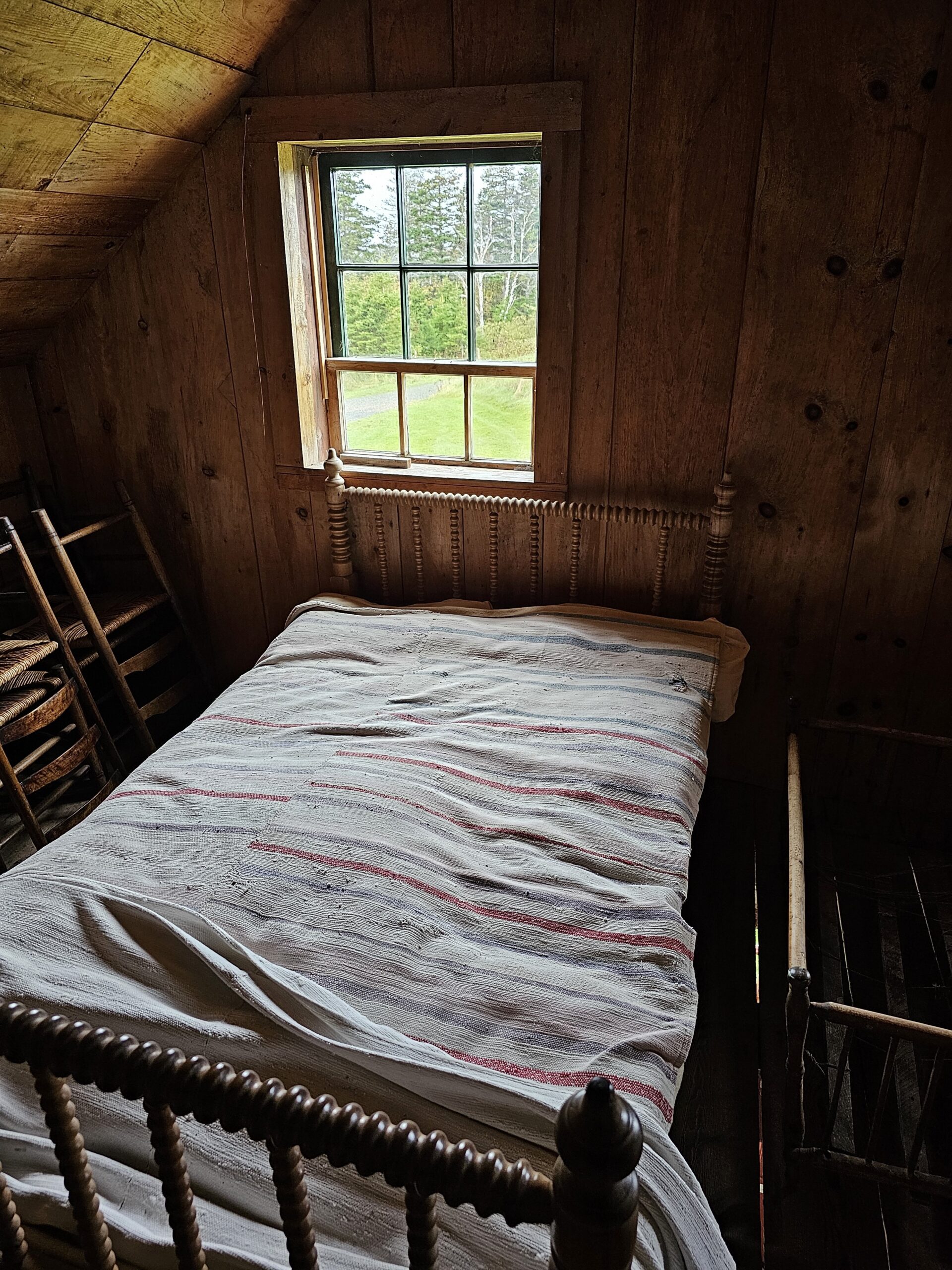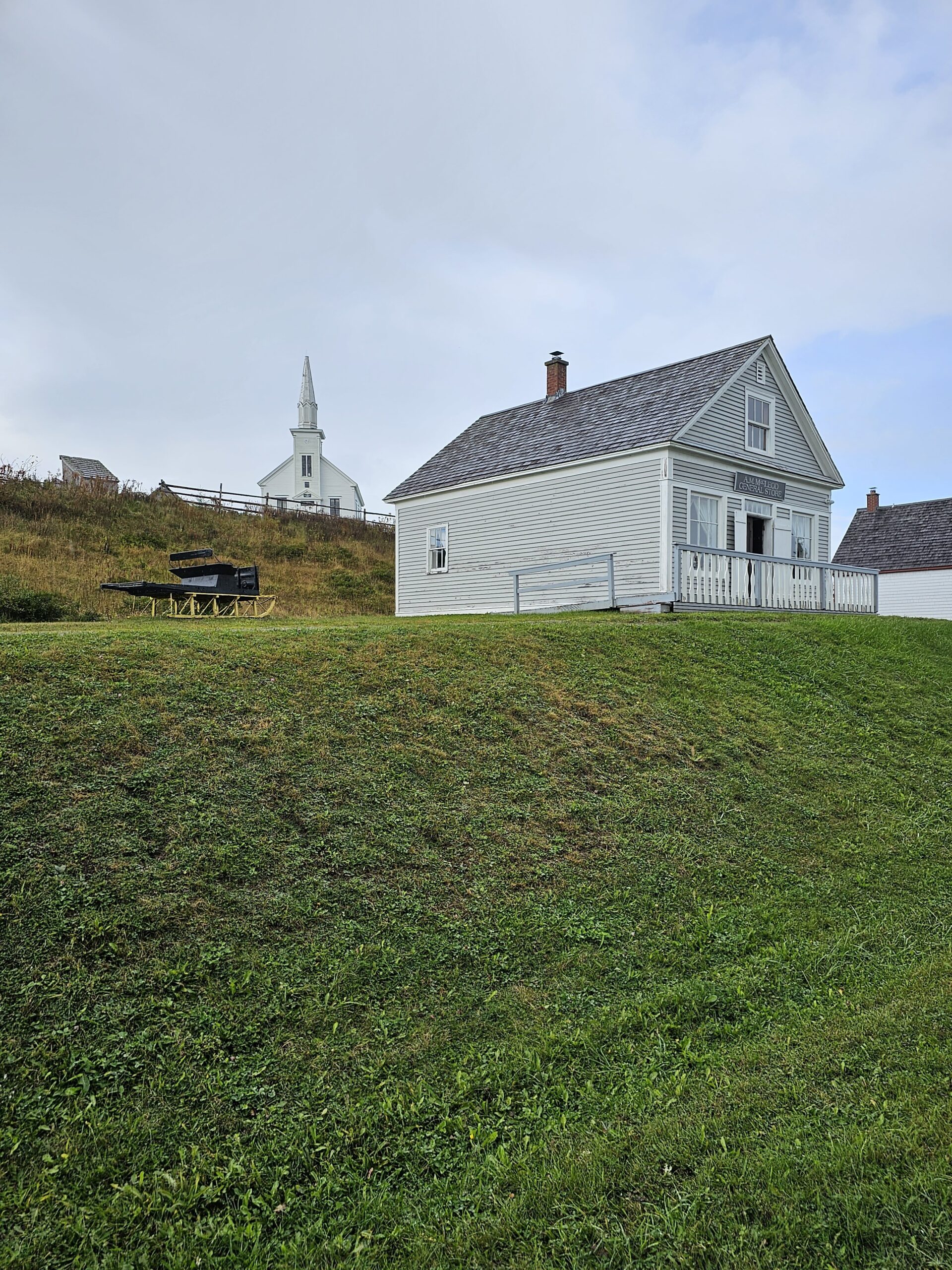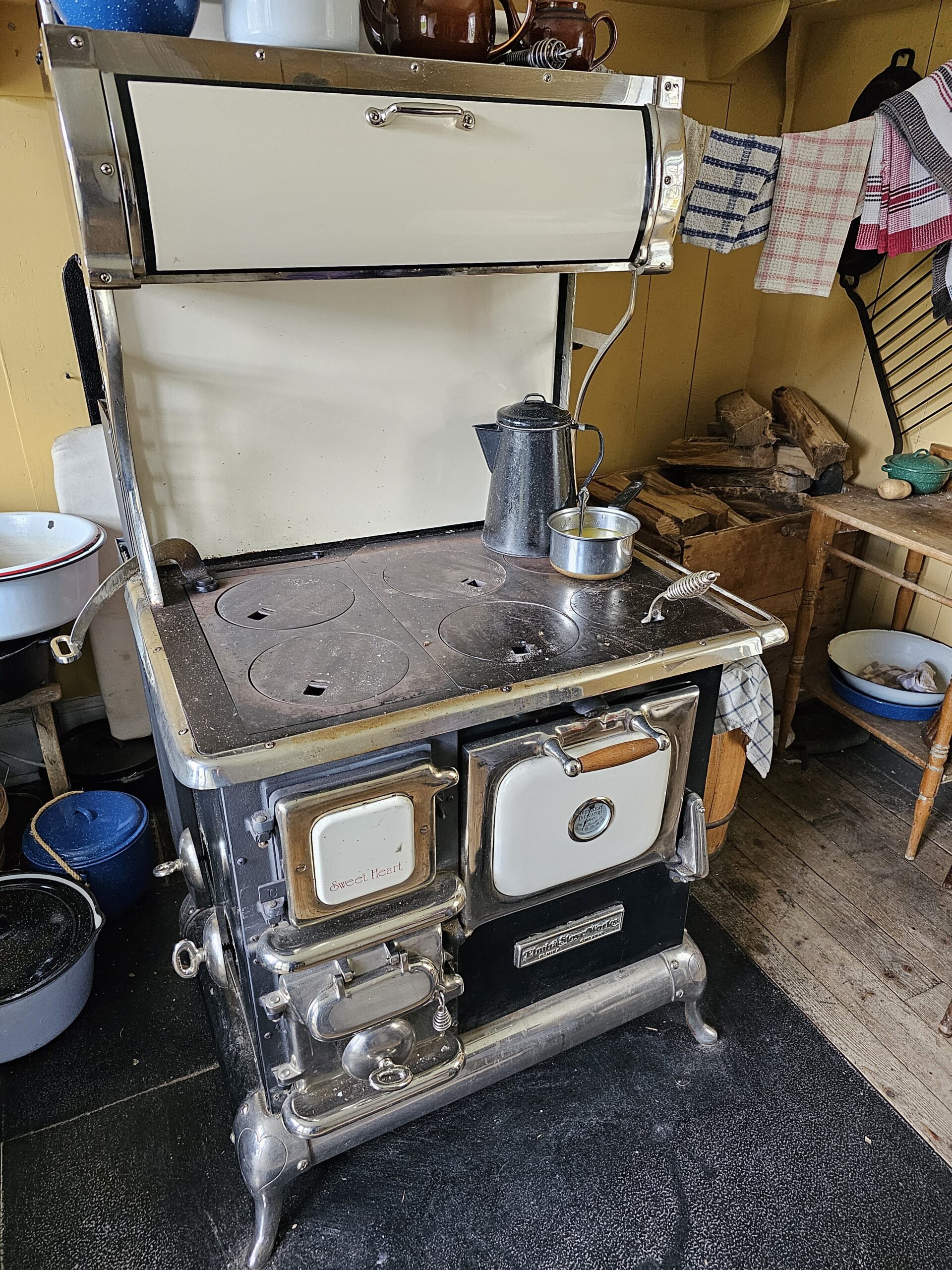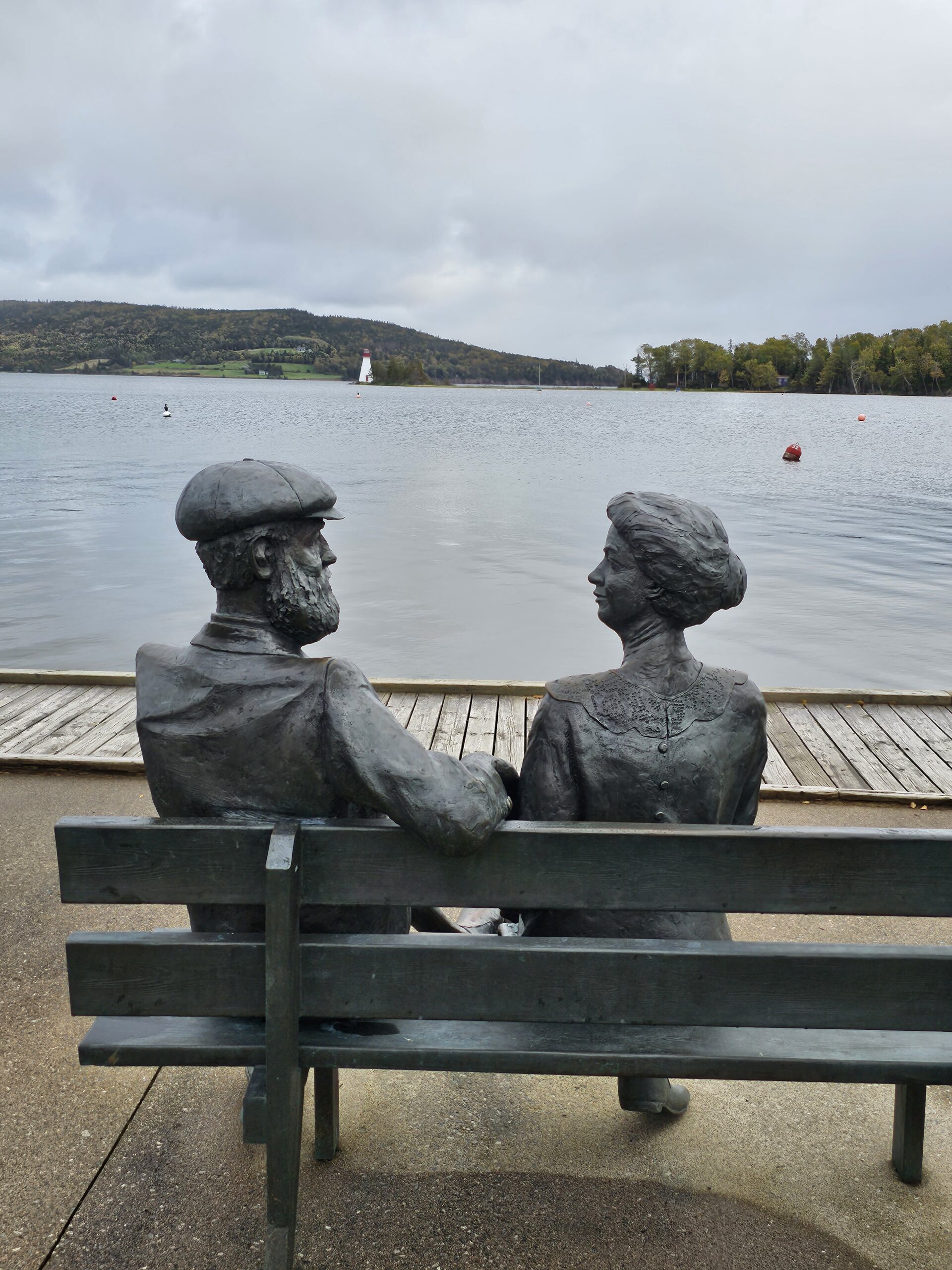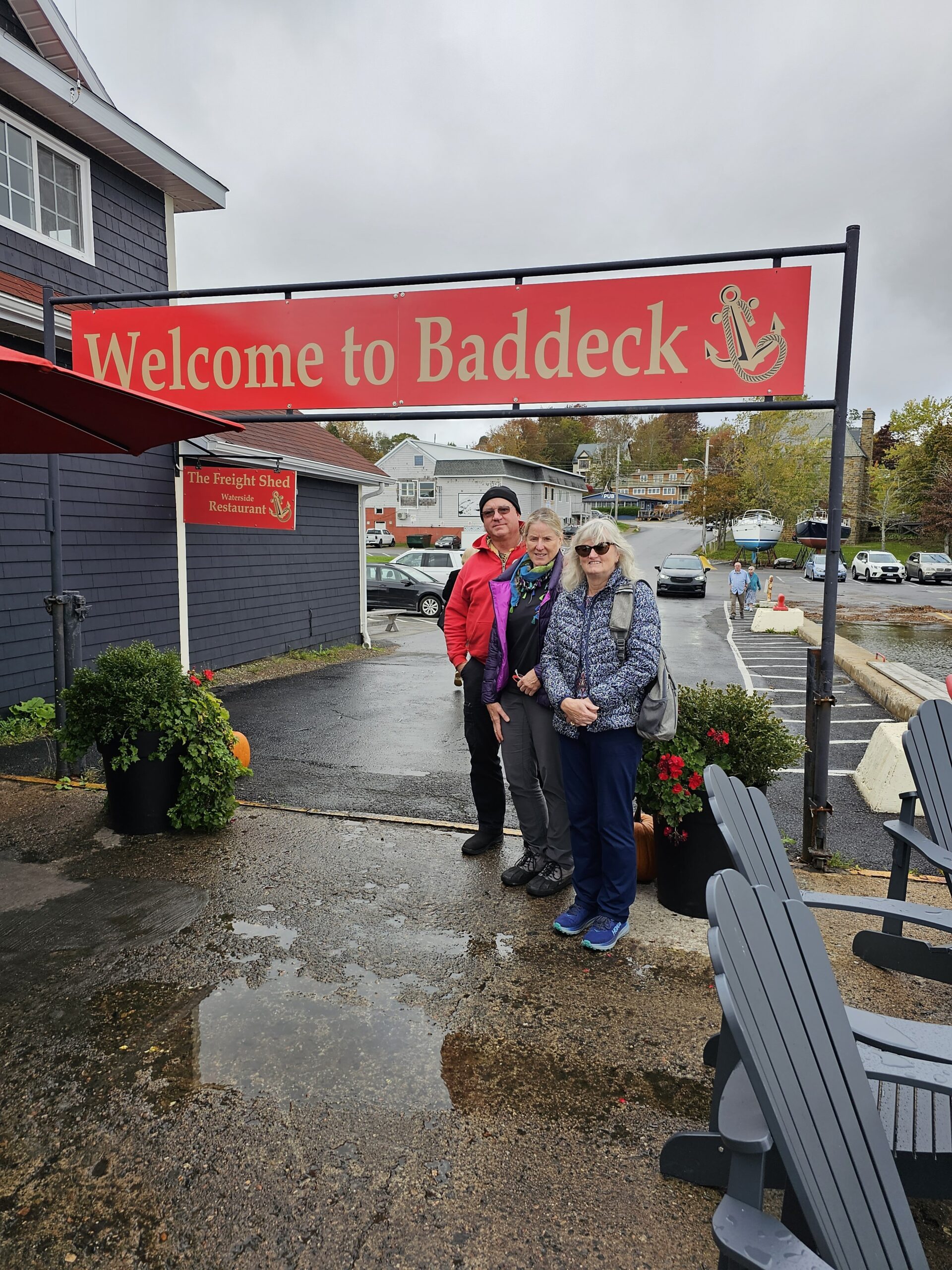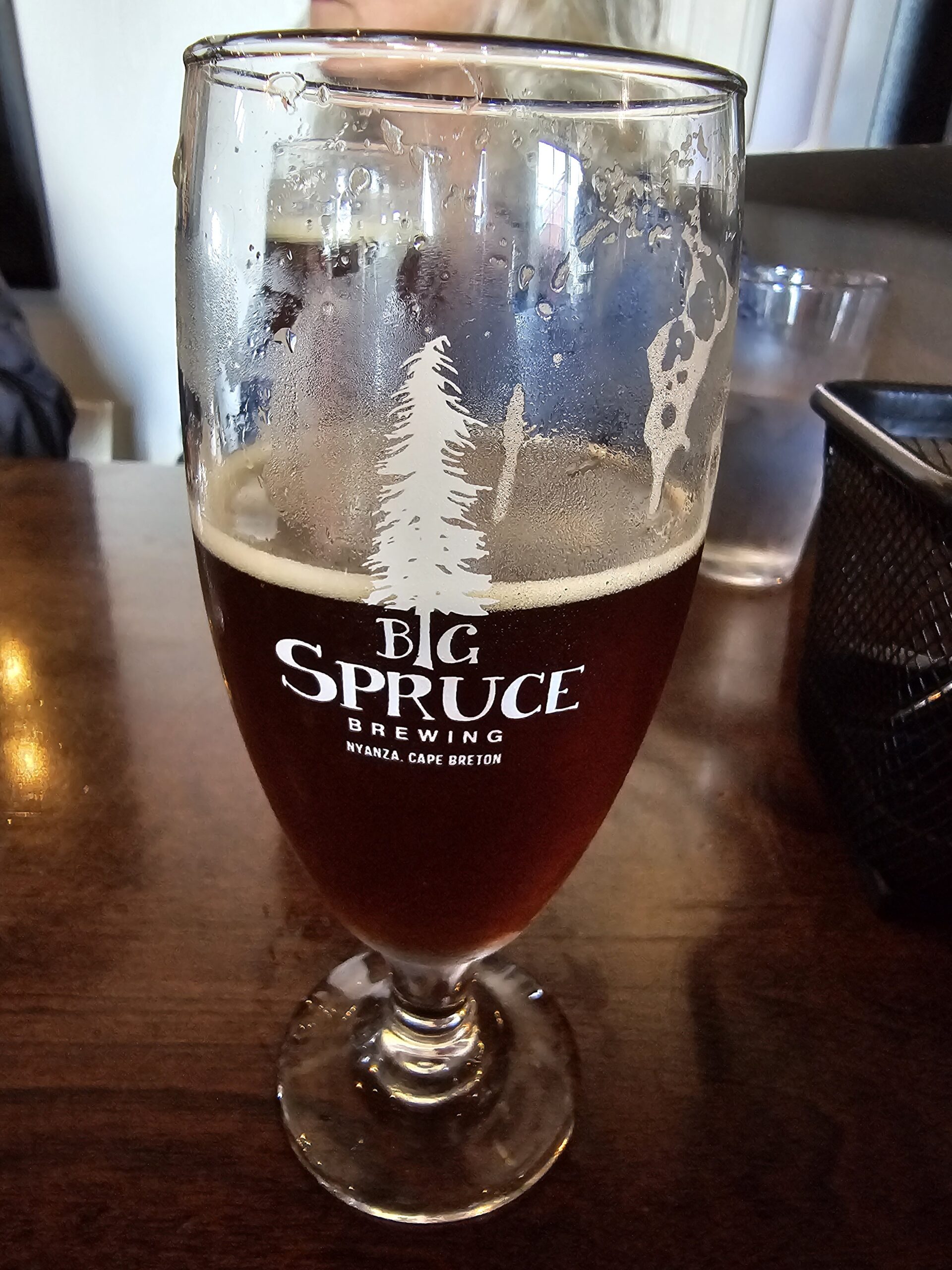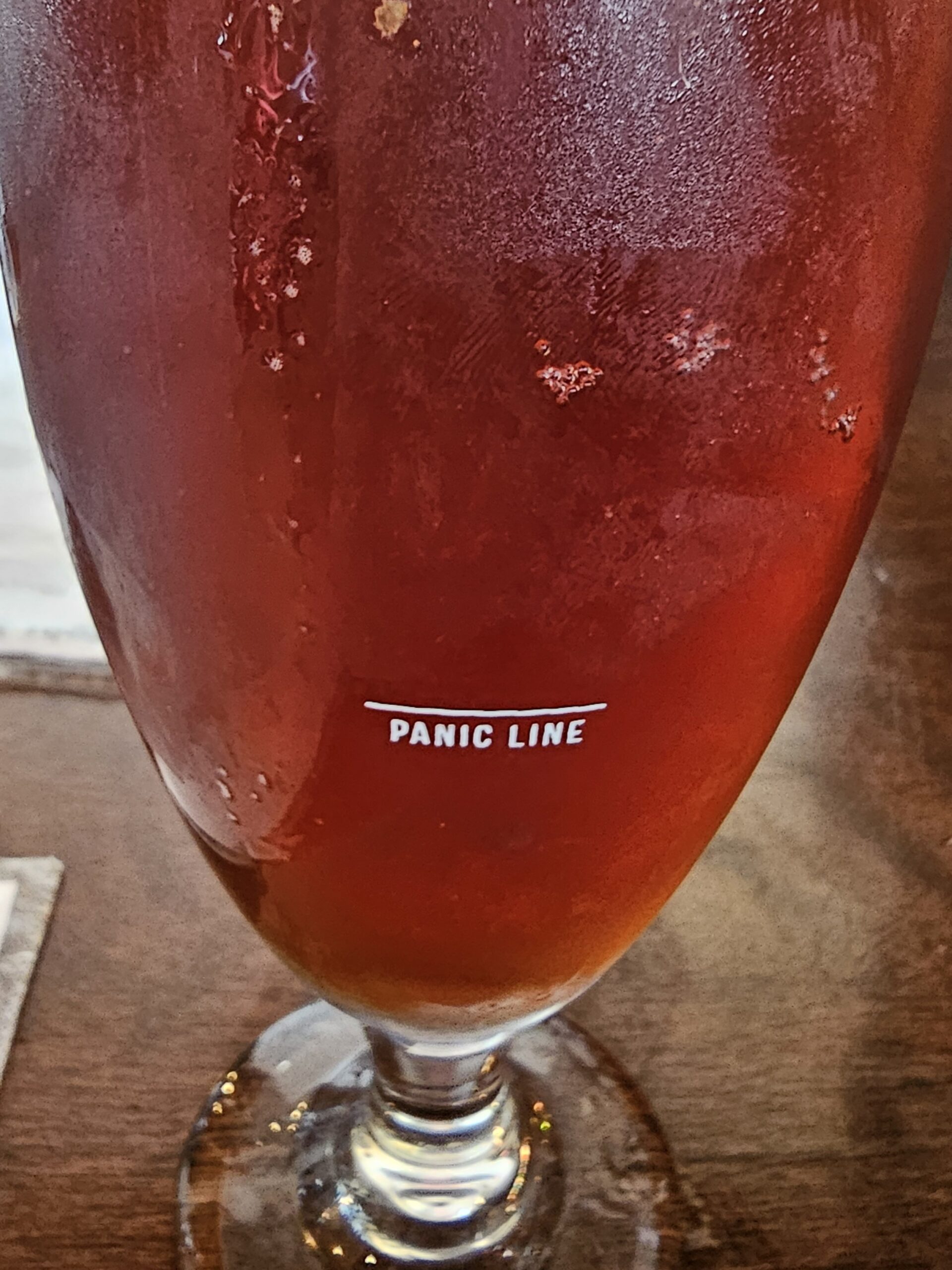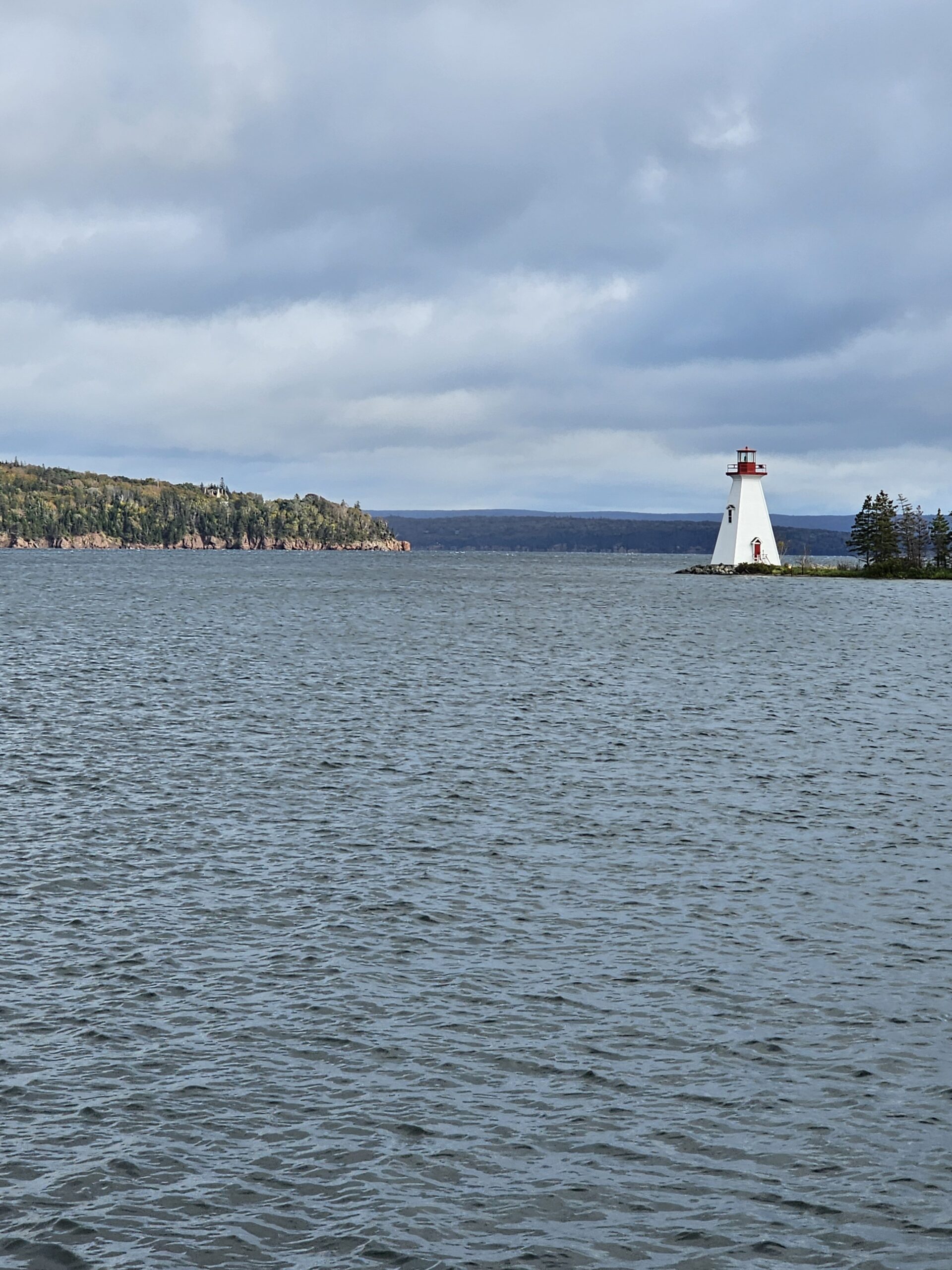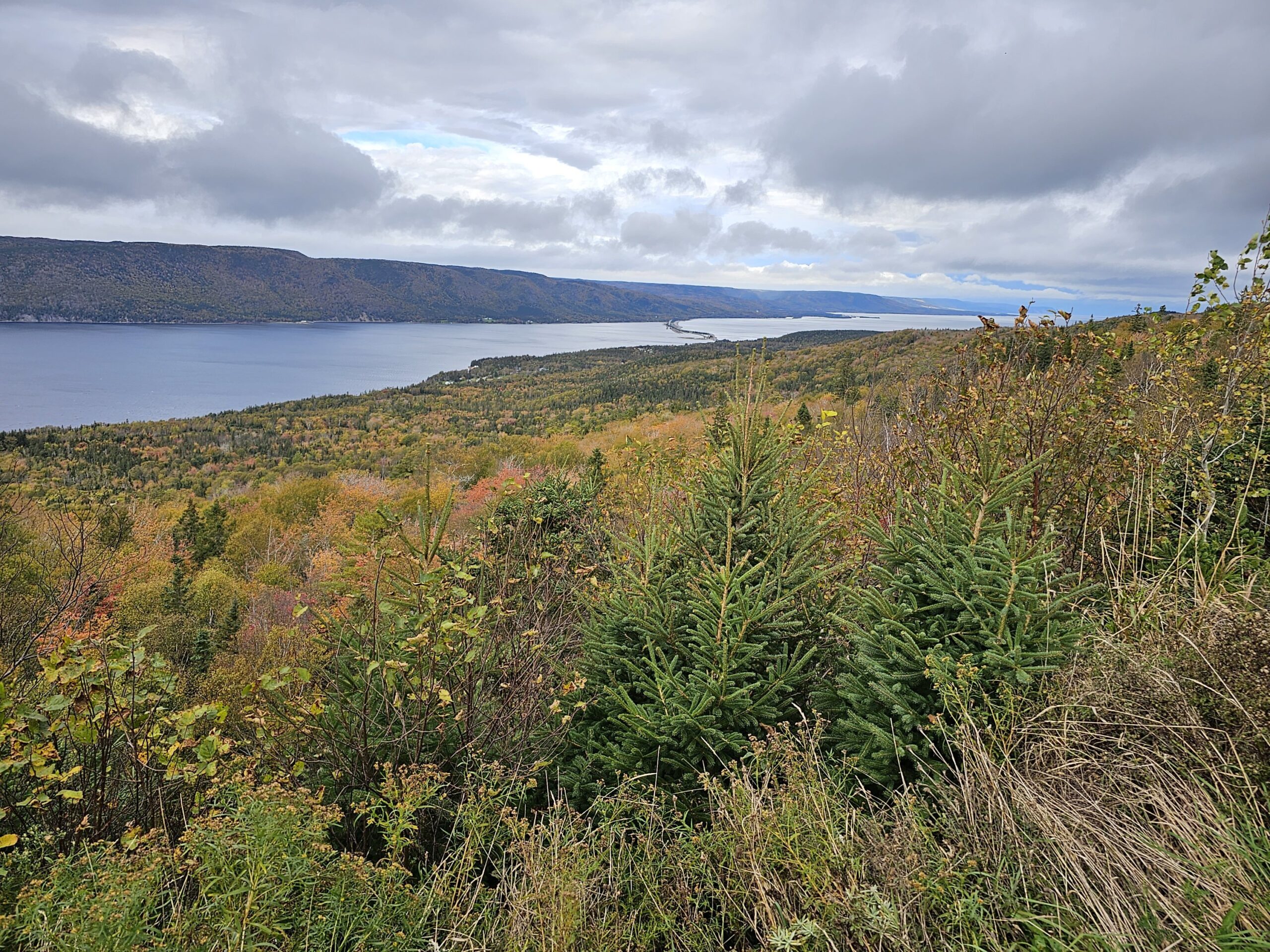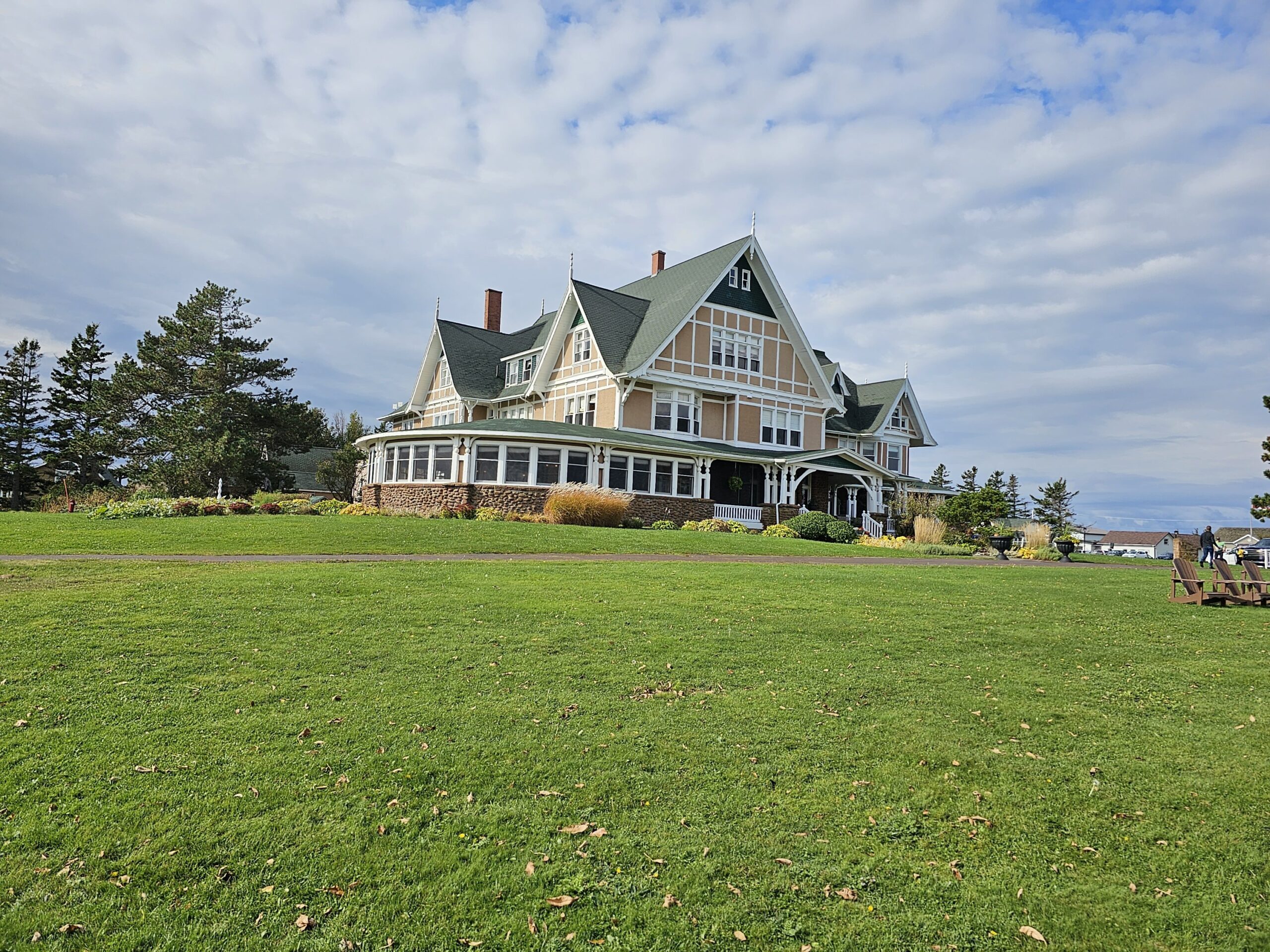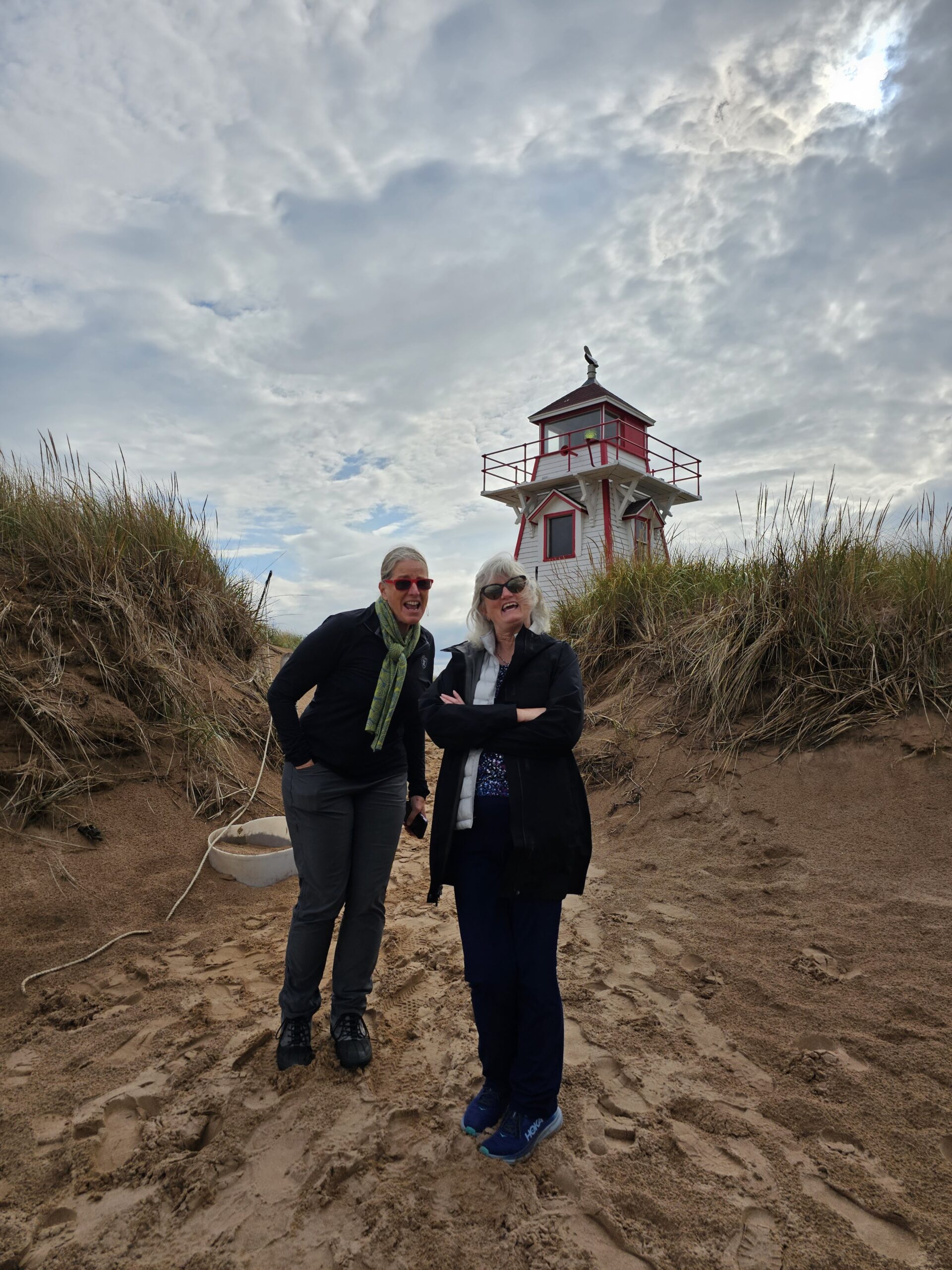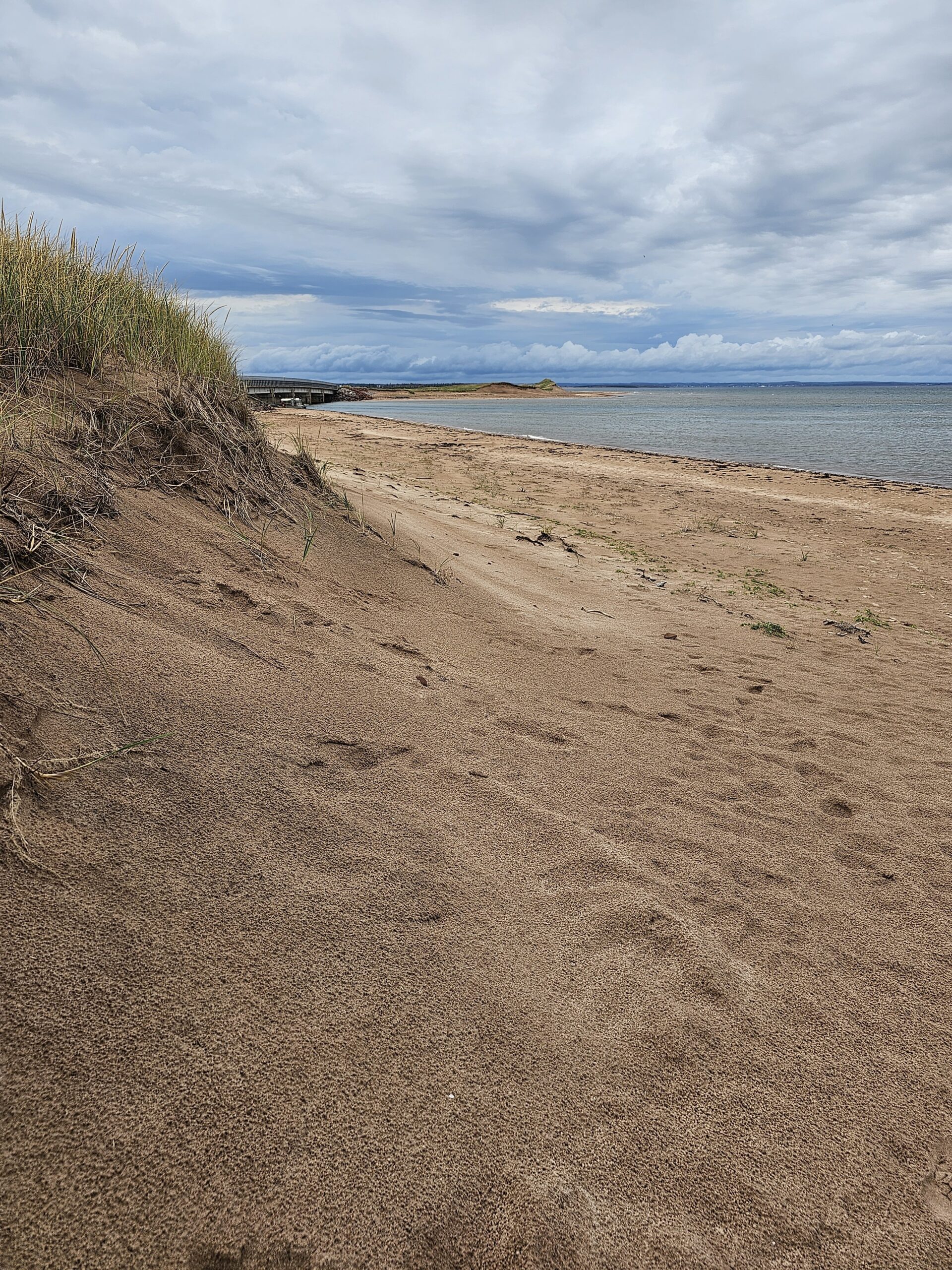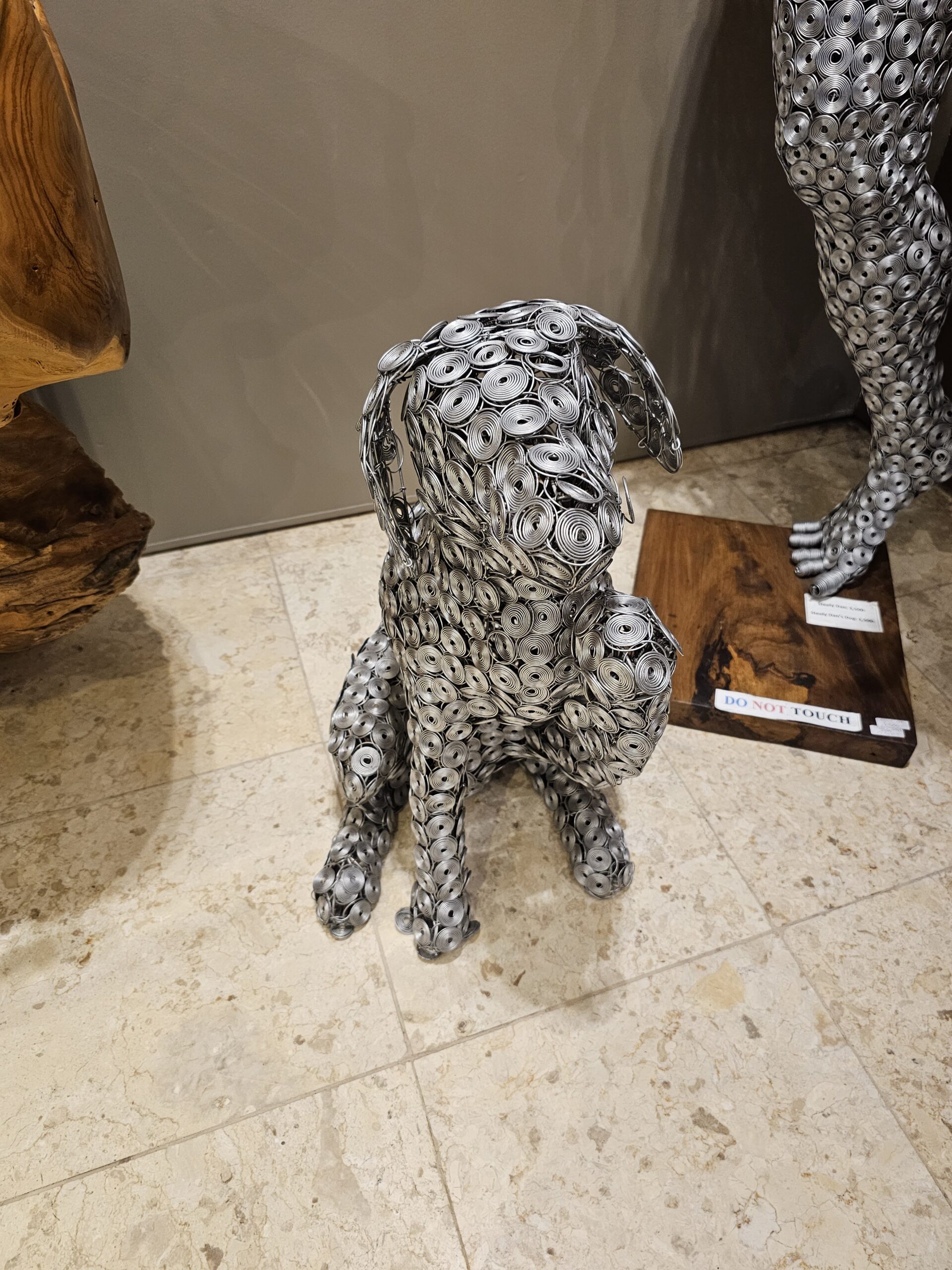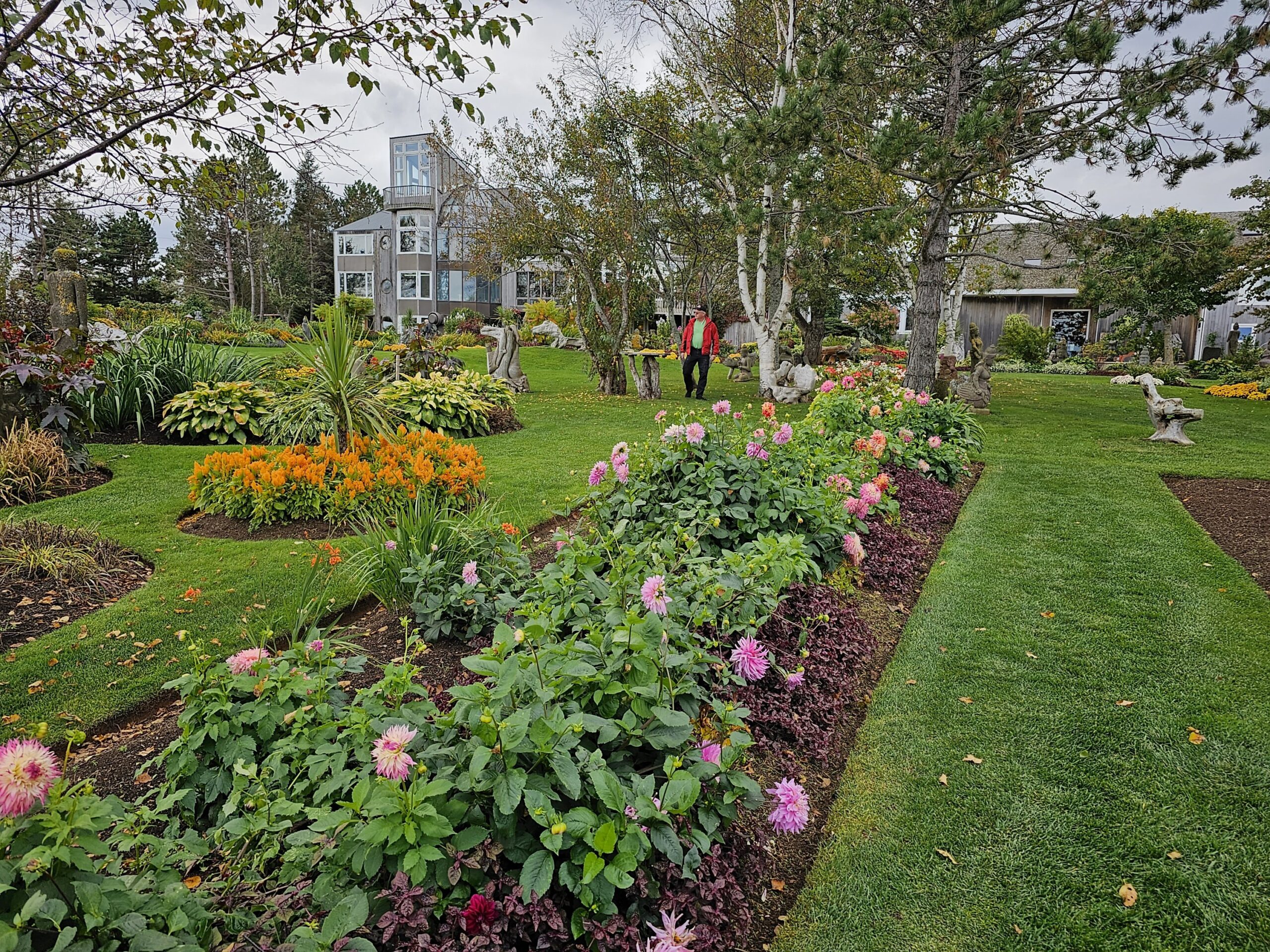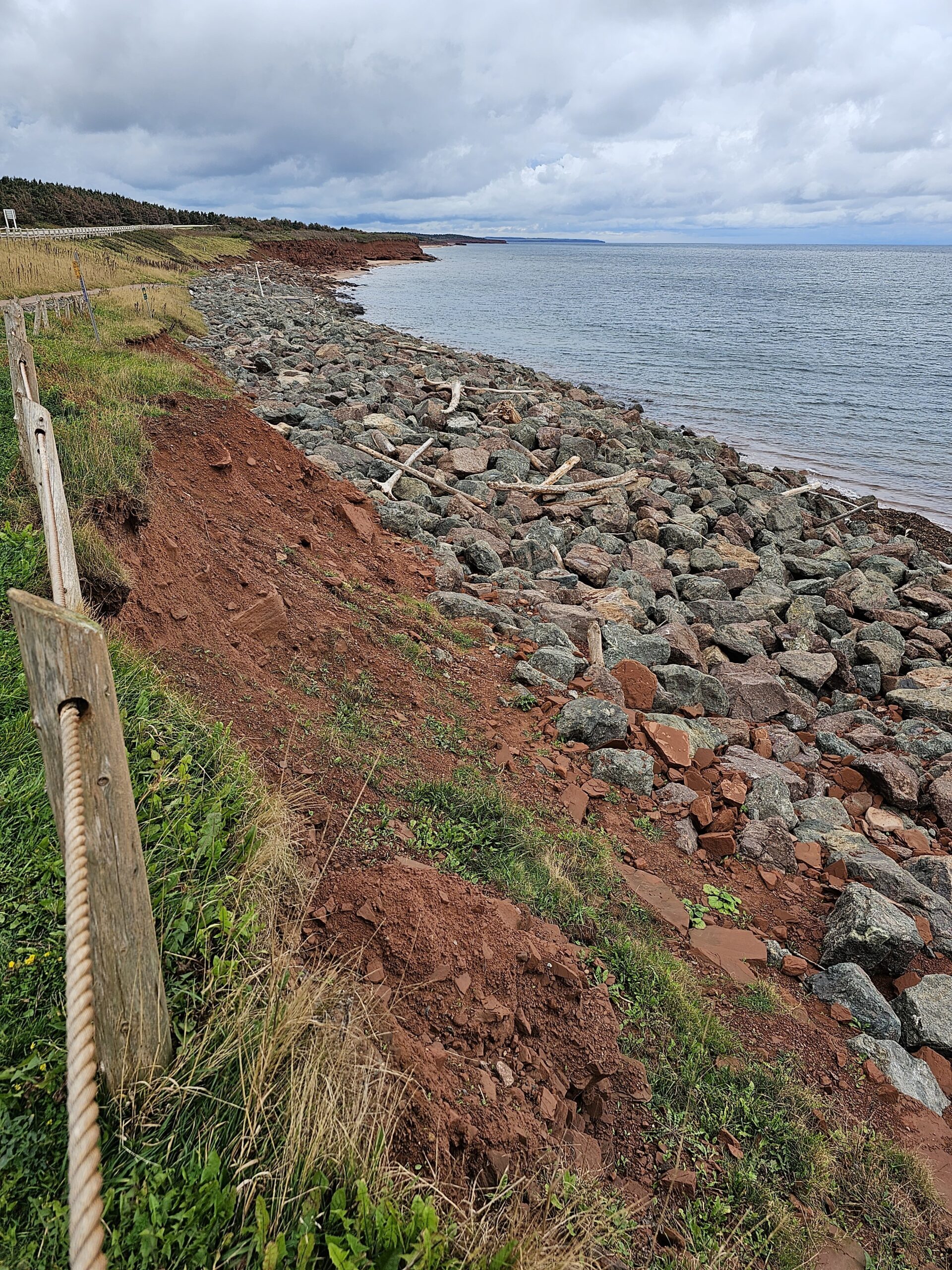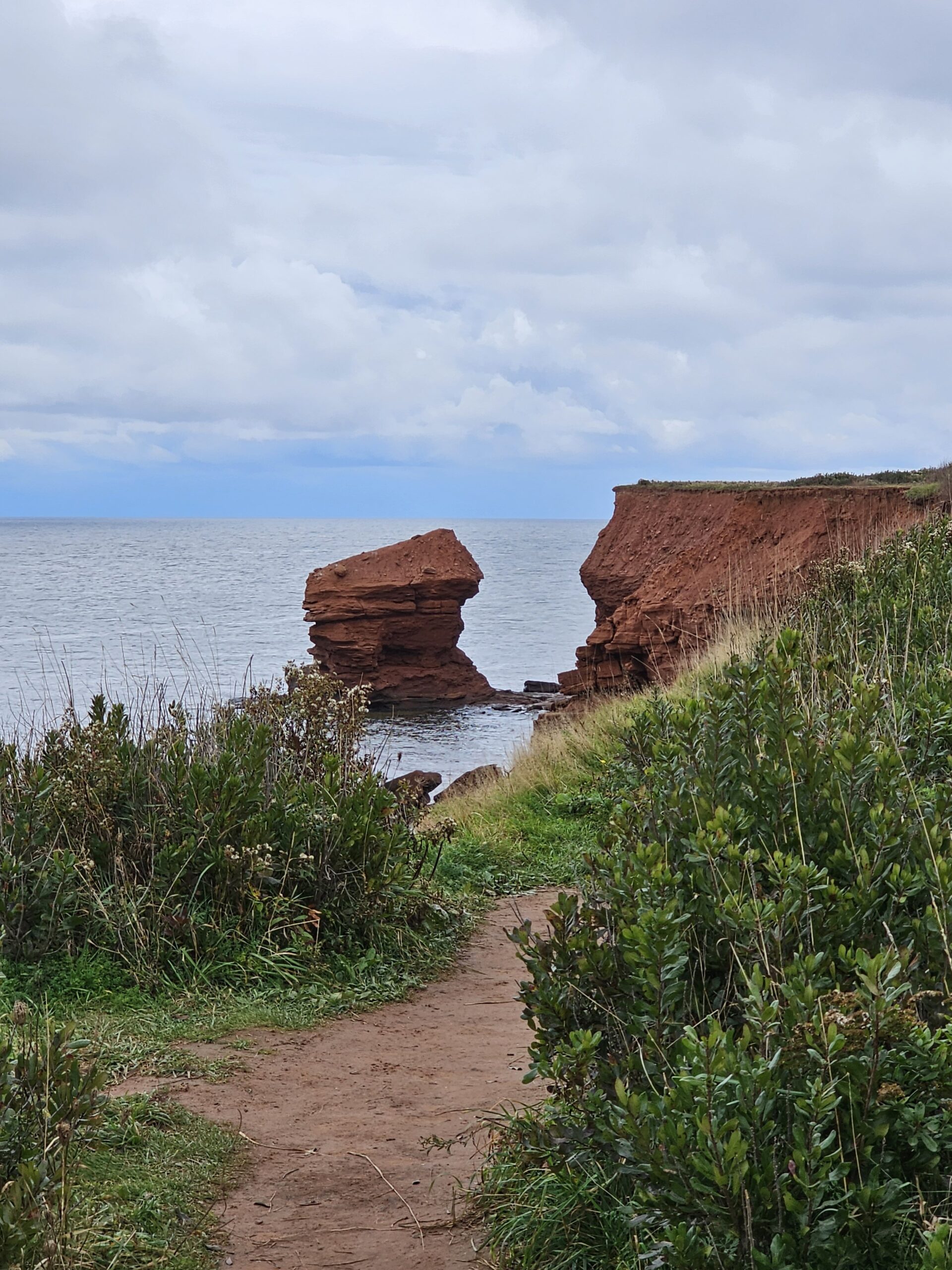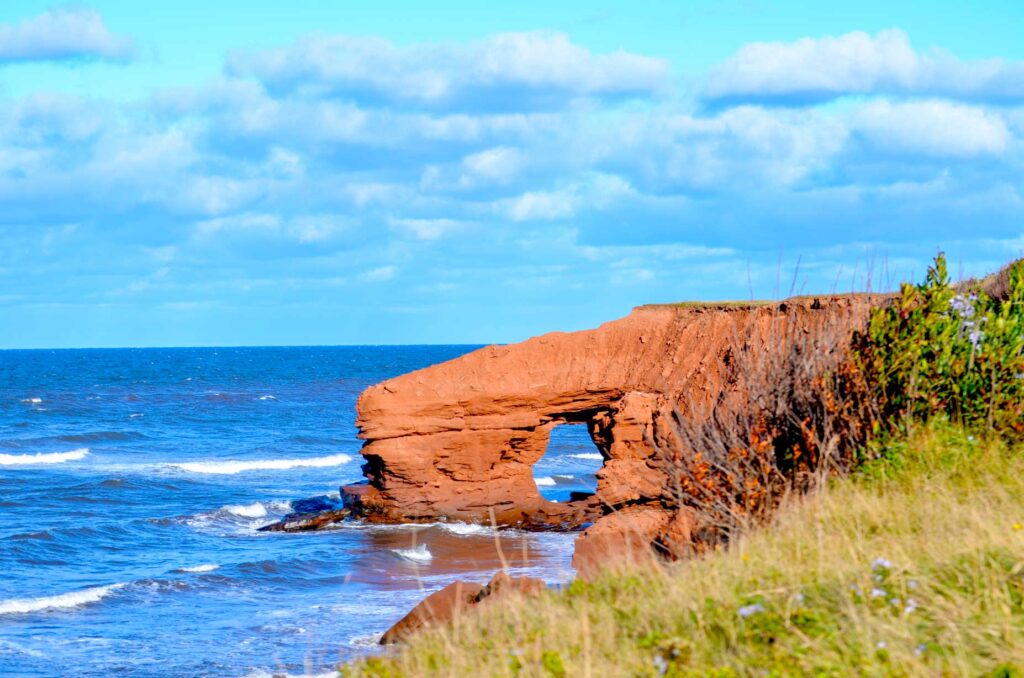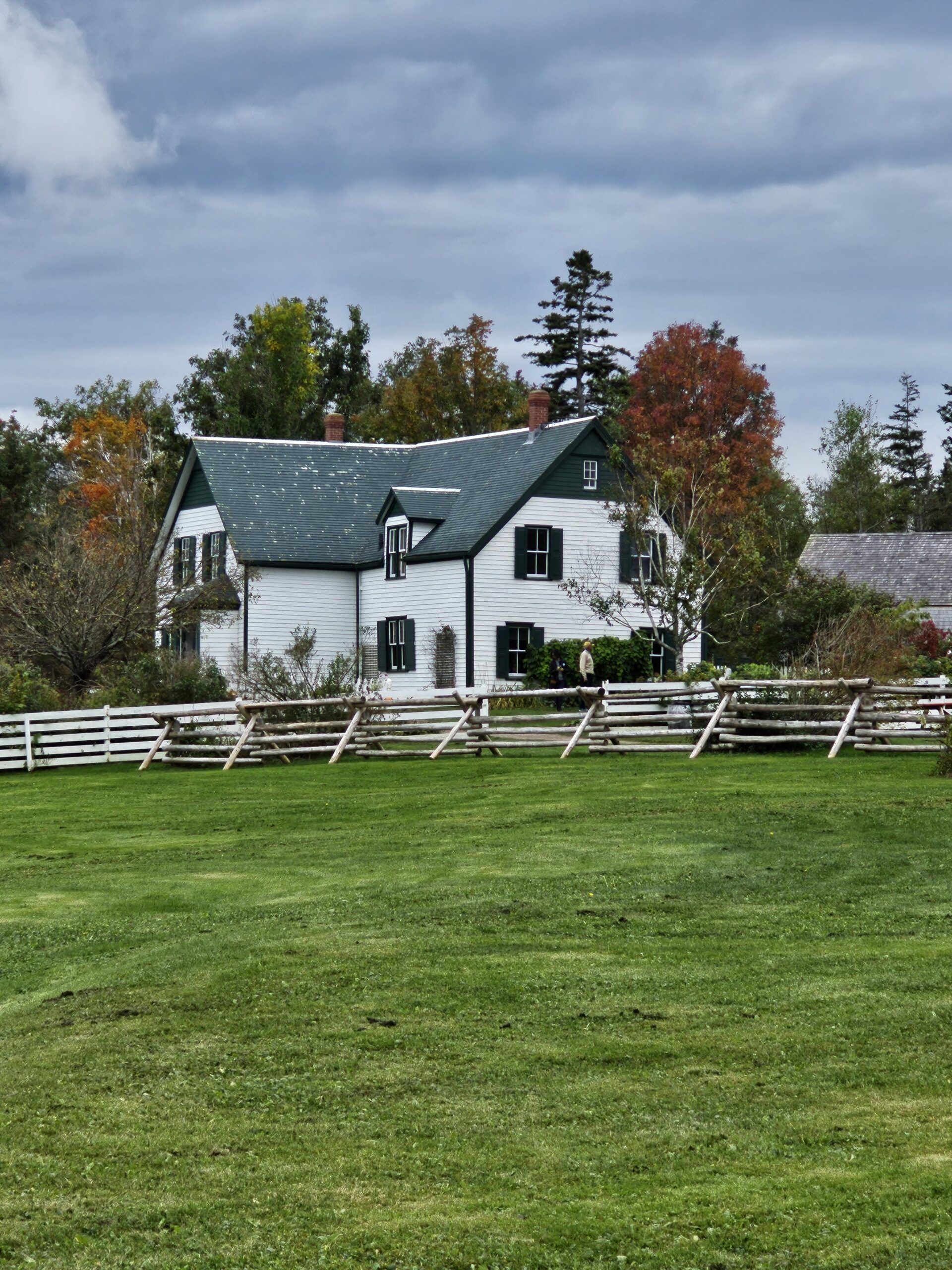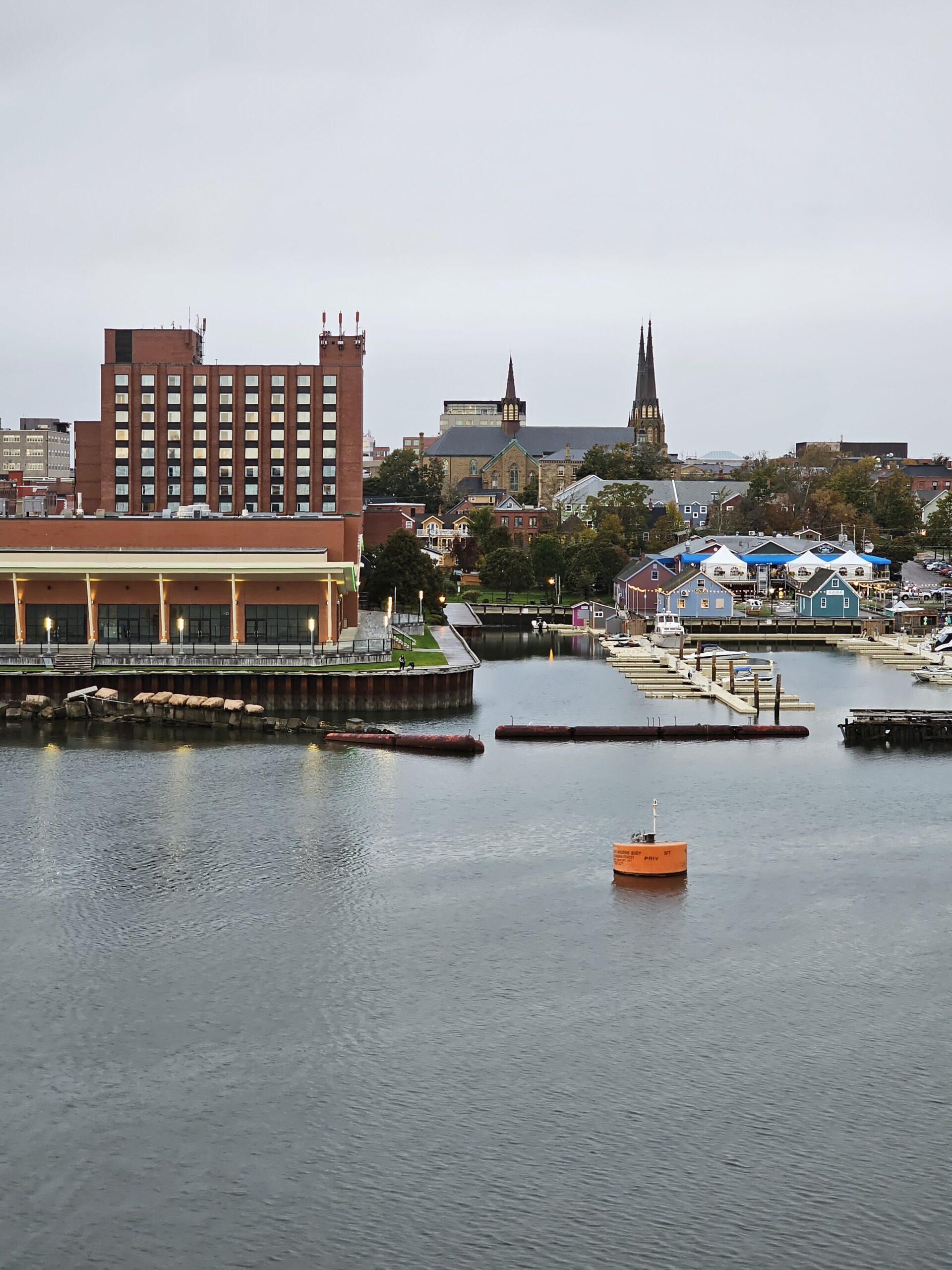The city of Sydney, Nova Scotia, is on Cape Breton Island, separated from the rest of Nova Scotia by the Strait of Canso, a body of water about 2 miles across. Our Tours-By-Locals guide on the Island was Brenda York, a 4th Generation local. The first sight you see when you enter the harbor is this huge fiddle, an ode to the islands musical roots. The fiddle is constantly playing music from it’s base. It was hard to get a photo without somebody posing in front of it!
Brenda took us around the beautiful Bras d’Or Lake, a body of water in the middle of the the island that actually isn’t a “lake”, but a tidal estuary. Our first stop was the “Highland Village Museum”, which is a recreated Gaelic settlement with historic buildings and costumed actors. The first part of the museum gave a brief history of the immigration of the Scottish to Nova Scotia (derived from New Scotland, which I didn’t know before now).
Significant socioeconomic changes in the 18th century pushed the Scottish people to immigrate to Nova Scotia, and much of the Scottish tradition lives on today. There are 11 historic buildings at this site, with the first one being a replica of a stone house in Scotland that dates from the 1770’s-1830’s. The lady inside pretended to be from that era. We saw her later in a home from the Turn of the Century House (1880’s-1920’s), where she claimed that wasn’t her in the first house, but her Grandmother. Nicely done!
Here is a view of the exterior.
These Highland Coos were nearby, adding a certain Scottish flare.
This is The Barn (circa 1770’s-1850’s), with the Bras d’Or Lake in the background. Looks just like Scotland!
This bedroom is in a house from the 1850’s-1880’s. Looks cozy enough, but it was likely shared by three people.
This is the one-room School House (1880’s-1920’s) with The Church in the background. No teacher to chat with in there. I think we are in the late season at this point so it’s not as active as it would be in the summer.
This is the stove from the Turn of the Century House. It was on and hot as hell, so you had to be careful around it!
Alexander Graham Bell first visited Baddeck, Nova Scotia in 1885, and fell in love with the place. The next year he returned to create a vacation home for his family. This is a statue of Alexander and his wife Mabel, and their estate is in the background, on the hill behind the lighthouse.
Baddeck is indeed a gorgeous spot!
I loved the local beer from Big Spruce Brewing.
I loved the back side of the glass even more! I gotta admit, I’ve never seen a “Panic Line” before. I actually got below that line before I ordered another….the panic is real!
This is another look across Bras d’Or Lake towards the Alexander Graham Bell estate, on the left side of the photo. Looks like they definitely picked the best spot on Cape Breton Island.
We made one last stop before heading back towards the ship. This is looking north toward Englishtown. I wish we had more time to see the rest of the island. Maybe a future trip to Nova Scotia?
Up next, we head to Halifax, the capital of Nova Scotia.
